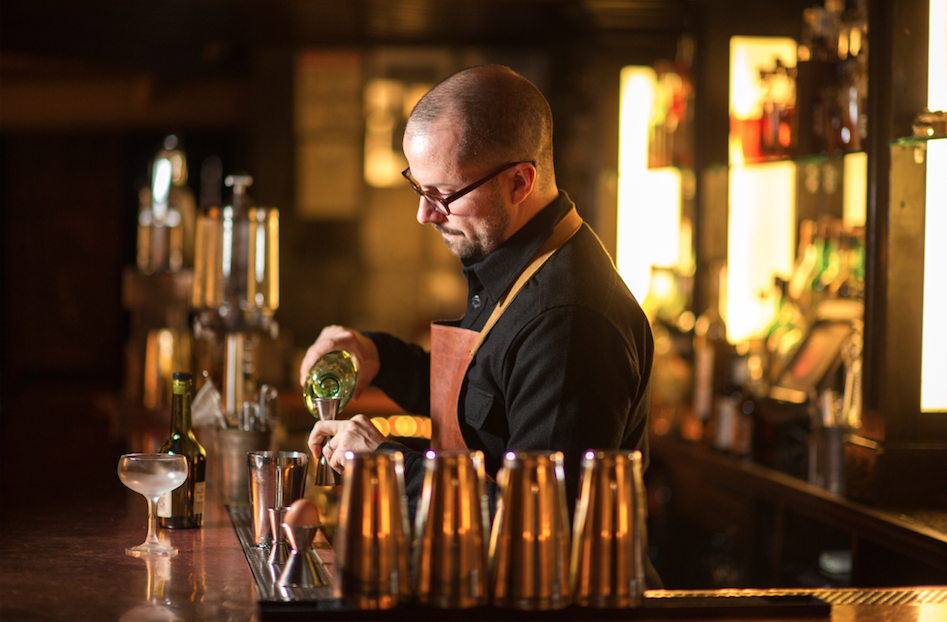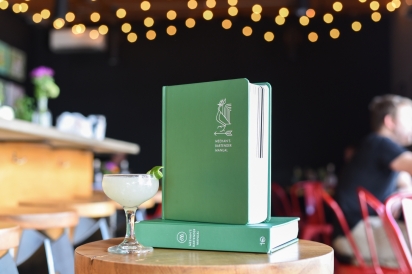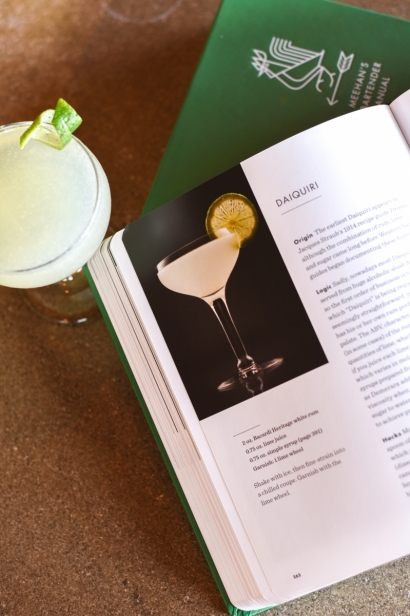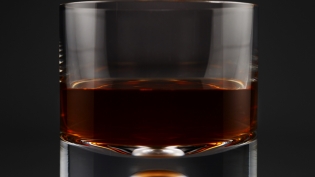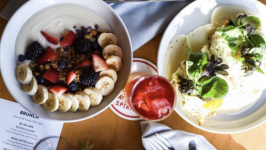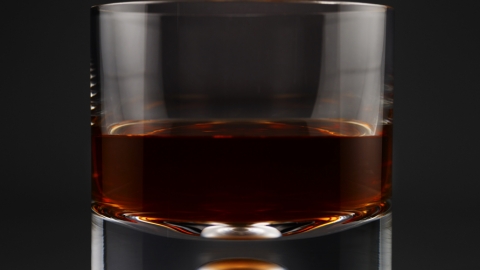Everything Matters
Jim Meehan is about the nicest guy you will ever talk to. He is humble, gracious and believes gratitude is something that can make a place go from good to exceptional. Jim Meehan is a well-known name in the cocktail industry. Actually, he is a bit of a legend with his creative concepts and down-to-earth focus on how to make an outstanding cocktail and taking that business to the next level.
If you don’t know who he is, he is a Midwest native who uprooted his life to New York City where he co-developed PDT (Please Don’t Tell), a bar in the East Village that’s has been touted as one of the world’s best bars. This secret society type speakeasy, Jim says, was actually the brain child of his partner Brian, who was looking for a way to extending the existing liquor license in his hot dog stand (Crif Dogs) in the same building without getting a new one (which is very difficult in New York City). Jim is also recognized as an expert mixologist who mixed mean cocktails at both Pegu Club and Gramercy Tavern. He now resides in Portland, Oregon where he’s expanded his reach through his company Mixography Inc., which combines his love for teaching the art of fine cocktail creation, his passion for writing and most importantly his ability to teach and train others to truly love what you do while making it a successful enterprise.
Jim has written two books, The PDT Cocktail Book and the Meehan’s Bartender’s Manual. His tie to Indiana? He has paired up with Cardinal Spirits for a one-of-a-kind event where Jim will be talking about his mixology concept, chatting up his cocktails and creating a cocktail dinner pairing. It is part of the wildly successful Cardinal Spirits Cocktail Camp Series. Recently, I caught up with Jim while he was visiting his parents in Empire, Michigan to chat about what really matters.
EI: How do you describe yourself?
JM: When my dream to become a doctor went by the wayside with my grades in chemistry and math at the University of Wisconsin at Madison, I ended up double majoring in (English an) African American studies. Stemming from what I learned, I sometimes compare what I’m attempting to do with cocktails to how rap artists of the 90’s turned hip hop into a multimedia culture view drinks within the subculture of bars and try to cultivate them. My consulting business Mixography promotes cocktails and mixing great drinks from an anthropological perspective.
EI: What is the most fulfilling thing for you in this business?
JM: One of the most fulfilling things is when people pull me aside and tell me how much my books have made a difference in their career. The recipes and the books are touching people whom I haven’t met, which extends my reach beyond bars them. EI: What inspired you to start PDT? JM: What many people don’t know is my business partners Brian Shebairo, who owns Crif Dogs, opened the bar as an extension of Crif Dogs when a Bubble Tea lounge failed next door. Full liquor licenses are very difficult to come by in NYC, so when the space opened up, Brian reached out to his liquor license attorney who said, “If you opened up a hole in the wall between the two venues and used it as an entrance to the bar, you wouldn’t have to apply for a new license.” The creativity of phone booth entrance it should be credited to Brian and his old friend Chris Antista: not me. However, I chose to serve the hot dogs at the bar were my along with the spirits selection and the cocktail programs.
EI: What aggravates you most when you walk into a bar?
JM: My biggest pet peeve is bad service. Service is everything to me. Bars and restaurants that don’t offer a warm greeting, or attentive service, and earnest thanks are missing the boat. The most important thing for hospitality professionals is to acknowledge their guest’s presence. The ideal time to do this is when a customer walks in the door. Concluding their experience with an earnest good-night and an expression of gratitude will make up for any shortcomings in between.
EI: What is the secret to your success?
JM: All the people who’ve mentored me throughout my career. Finding good people and giving them a lot of leeway to achieve their potential is how I’ve become successful as a bar operator.
EI: How do you feel about today’s generation of bartenders?
JM: I think a lot of operators need to do a better job of explaining what success looks like for their staff. The biggest difference between the Millennials and Generation X is that Millennials want the education and want qualified leaders to be available to mentor and train them. You get out of your staff what you put into them. Operators need to be firm and clear and take responsibility for their team’s shortcomings. Most of the people who I came up with as a young bartender fell into the job because it was all they imagined they could do. However, many of today’s bartenders are college educated and choose to have this job. The talent pool is much stronger, but it demands more from employers.
EI: Do you consider yourself an artist?
JM: I consider myself a craftsperson. Most artist make one-offs, while I want to create things that are mass-produced and sold. I’m always looking to scale and commoditize my creartions; which is different from most artists.
EI: What is the most underrated tool in a bartenders toolbox?
JM: In a bar? Well, most cooks bring their own knives to work, so why shouldn’t more bartenders buy their own tools? For home bars: a set of jiggers. Drinks should be measured: not eyeballed.
EI: What is most overused in a bar?
JM: Sugar. If a drinks is too sour, you can add sweetness, but you can’t take it away. If a drink is too sweet, you have to walk away. You have to use sweeteners to balance acidic ingredients, but discretion is advised.
Once again: this is unrelated to the question: can you cut or add another question? Bitters are the spice of cocktails and they are here to stay, and shrubs are very trendy and an acquired taste.
EI: What is the best cocktail you’ve ever had?
JM: I always tell people my favorite cocktail is the one in front of me. The reason I say this is because we’ve all met that person who had the glass of wine in the South of France and you want to roll your eyes when they tell the story because you haven’t had that experience, and can’t relate. It’s is important to be present at all times. My favorite people to drink with are the ones I’m with at that moment. Making that moment an experience and engaging with my company them is so important and can be so inspiring to all.
EI: What is the cocktail trend for 2019?
JM: The highball cocktail is the trend for 2019. Not your grandmother’s whiskey and ginger ale; rather Japanese or blended Scotch Whisky and soda water.


